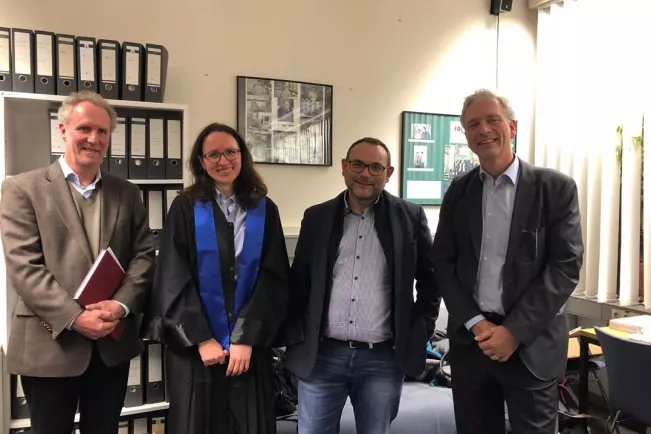Institut für KI und Autonome Systeme (A2S)
Anastassia Kuestenmacher successfully defends her PhD

Congratulations to our newest PhD alumnus: Anastassia Kuestenmacher who joined the MAS program in the SS 05! Anastassia successfully defended her PhD, titled “Improving the Reliability of Service Robots in the Presence of External Faults”, yesterday at RWTH Aachen, with magna cum laude.
Photos from the defense and the traditional Doktorhut making session are on Facebook.
Abstract:
In the field of domestic service robots, recovery from faults is crucial to promote user acceptance. In this context, this work focuses on some specific faults which arise from the interaction of a robot with its real world environment. Even a well-modelled robot may fail to perform its tasks successfully due to external faults which occur because of an infinite number of unforeseeable and unmodelled situations.
Through investigating the most frequent failures in typical scenarios which have been observed in real-world demonstrations and competitions using the autonomous service robots Care-O-Bot III and youBot, we identified four different fault classes caused by disturbances, imperfect perception, inadequate planning operator of chaining of action sequences.
This thesis then presents two approaches to handle external faults caused by insufficient knowledge about the preconditions of the planning operator.
The first approach presents reasoning on detected external faults using knowledge about naïve physics. The naïve physics knowledge is represented by the physical properties of objects which are formalized in a logical framework. The proposed approach applies a qualitative version of physical laws to these properties in order to reason. By interpreting the reasoning results the robot identifies the information about the situations which can cause the fault. Applying this approach to simple manipulation tasks like picking and placing objects show that naïve physics holds great possibilities for reasoning on unknown external faults in robotics.
The second approach includes missing knowledge about the execution of an action through learning by experimentation. Firstly, it investigates such representation of executing specific knowledge that can be learned for one particular situation and reused for situations which deviate from the original. The combination of symbolic and geometric models allows us to represent action execution knowledge effectively. This representation is called action execution model (AEM) here. The approach provides a learning strategy which uses a physical simulation for generating the training data to learn both symbolic and geometric aspects of the model. The experimental analysis, performed on two physical robots, shows that AEM can reliably describe execution specific knowledge and thereby serving as a potential model for avoiding the occurrence of external faults.
Related links: Magna cum laude - PhD for Anastassia Küstenmacher